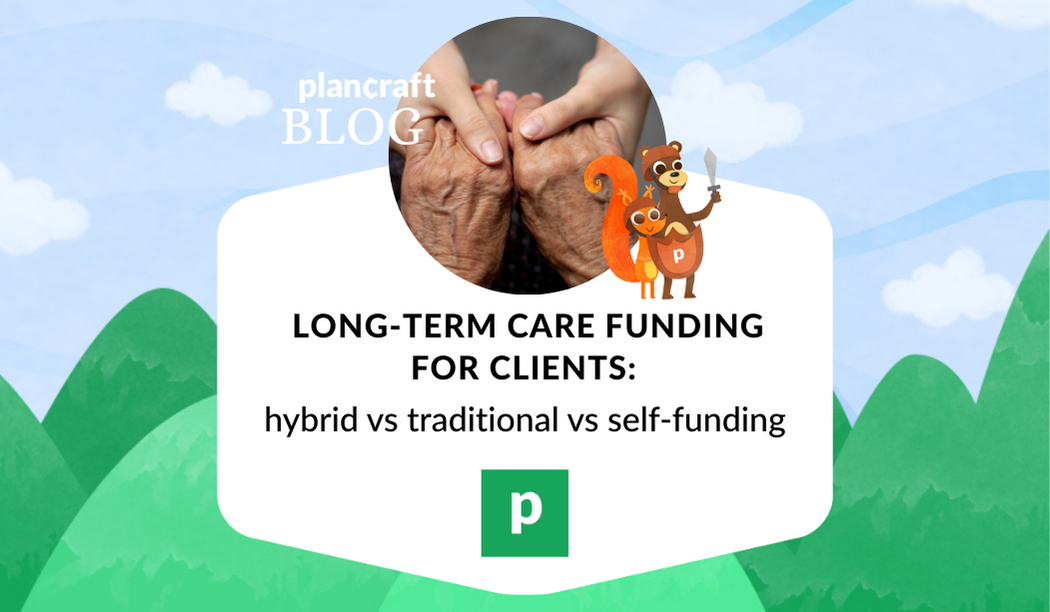A client in her late 50s asked me a fair question: “If I never need care, do I just burn the premiums?” Another client, 67 and newly retired, said: “I want control of my money, but I don’t want my kids to become my plan.” That tension is the heart of long-term care planning. LTC is expensive, Medicare doesn’t cover most custodial care, and there are three real ways to pay for it: insure it, pre-pay it inside a life or annuity contract, or self-fund it from the portfolio.
First, set the stakes in one minute
- Costs are high and rising. National medians often land around 70k a year for assisted living, about 110k for a nursing home semi-private room, and around 125k for a private room. Home care and adult day services have climbed too. Bring a local cost snapshot to every LTC meeting.
- Most people will need some care. Roughly seven in ten people who reach age 65 will use some form of long-term care during life.
- Medicare is not the plan. It covers skilled and short-term rehab in narrow situations. It does not pay for most non-medical custodial care, which is where the real costs live.
Option 1: traditional LTC insurance
What it is
A tax-qualified policy (IRC 7702B) that pays benefits when the insured can’t perform two activities of daily living or has severe cognitive impairment. Benefits are generally income-tax free. Premiums may be deductible within age-based limits if a client itemizes or is self-employed.
Pros
- Strong leverage on premium dollars
- Inflation protection and shared-care riders
- Access to state Partnership policies in many states
Cons
- Rate increase risk on some blocks; set expectations and design conservatively
- Full underwriting and health knockouts
- “Use it or lose it” optics
Best fit
- Ages 50 to 64 in good health
- Clients who value Partnership asset protection
- Couples who want shared benefits rather than two separate pools
Design notes you can reuse
- 3 percent compound inflation as a middle ground for many mid-50s buyers
- 90 to 180 day elimination period
- 2 to 3 year benefit period per person with shared care for couples
- Ask carriers for premium increase history during due diligence
Option 2: hybrid life or annuity with LTC benefits
What it is
Permanent life insurance or an annuity with LTC benefits built in. Some riders are true LTC riders under 7702B. Others are chronic illness riders under 101(g) that accelerate a death benefit. The differences matter for eligibility, taxation, and consumer protections.
Why advisors like it
- Clients avoid the “use it or lose it” feeling
- Premiums are often guaranteed or limited-pay
- Friendly to 1035 exchanges from cash value life or nonqualified annuities
Watch-outs
- Verify rider type and triggers
- Upfront funding can be higher
- Internal rates vary widely by age, health, guarantees, and inflation options
Best fit
- Clients with idle cash value or nonqualified annuities to reposition
- Clients who want premium certainty and a benefit either way
Option 3: self-funding with a written plan
What it is
Earmarking liquid assets and cash flow to cover an expected range of care costs, coordinated with family roles, home modifications, and housing choices.
Pros
- Full control and no underwriting
- Avoids policy complexity if the client can truly bear the risk
Cons
- Sequence risk if care starts during a down market
- Requires discipline and family alignment
- Clients often underestimate duration and cost
Tax angles that help
- Medical deduction route. Tax-qualified LTC premiums and out-of-pocket LTC services are medical expenses, subject to itemization and the 7.5 percent AGI threshold.
- HSA route. HSA distributions can pay tax-qualified LTC premiums up to age-based limits that adjust annually.
Best fit
- High-liquidity households that prefer control
- Clients willing to revisit underwriting by a set age if markets or health change
A simple decision map you can walk through in five minutes
-
Ability and willingness to self-insure. If yes and liquidity is strong, model self-funding with market drawdown stress. If no, continue.
-
Health and underwriting. If healthy in the 50s or early 60s, price both traditional and hybrid. If underwriting is tight, some chronic illness riders may still be options.
-
Desire for guarantees. If premium certainty and a benefit either way are non-negotiable, favor hybrid. If maximum leverage per premium and Partnership features matter, favor traditional.
-
Existing policies. If there is cash value life or a nonqualified annuity, evaluate a partial 1035 exchange to fund part of the solution.
Client conversation outline you can copy
- Open with values. “What matters most if care is needed: staying at home, keeping family as coordinators not caregivers, protecting assets for a spouse or heirs?”
- Show a cost range. Local home care, assisted living, and nursing home medians on one page.
- Pick one primary and one backup. Example: Hybrid as the primary plan with a written self-funding backstop for the elimination period.
- Assign roles. Who calls the care manager, who handles bills, what home changes happen first.
- Document triggers. Who certifies need, what the elimination period means in practice, and how benefits coordinate with Medicare and Medigap.
Quick case sketches
Couple, 58 and 56
Moderate assets, want Partnership protection and lower first-year cost. Design a traditional policy with 3 percent compound inflation, shared care, and a 90 day elimination period. Review carrier rate history and illustrate reduced-benefit choices if rates rise.
Widow, 67
Strong balance sheet, large nonqualified annuity with gain, dislikes “use it or lose it.” Complete a partial 1035 exchange into a hybrid annuity-LTC policy for premium certainty and residual value if unused.
Engineer, 61
Prefers control and has 4 million dollars liquid. Set a dedicated LTC sleeve equal to three years of local assisted living cost plus home modifications. Consider a minimal policy later for coordination and caregiver support benefits, paid via HSA up to allowable limits.
Red flags to check before you recommend anything
- Rider type and tax treatment. Confirm 7702B LTC versus 101(g) chronic illness
- Inflation option. Compounding matters under age 60
- Evidence of insurability. Capture impairments early
- Partnership status. Verify state rules and reciprocity
- Elimination period details. Calendar days versus service days can change outcomes
What to do this week
-
Pull a list of clients age 55 to 70 and segment by health and liquidity.
-
For three households, prepare side-by-side quotes: traditional and hybrid. Add a self-funding column with a real local cost range.
-
Map a one-page care plan that names roles, shows benefit triggers, and lists the first three calls to make if care is needed.









